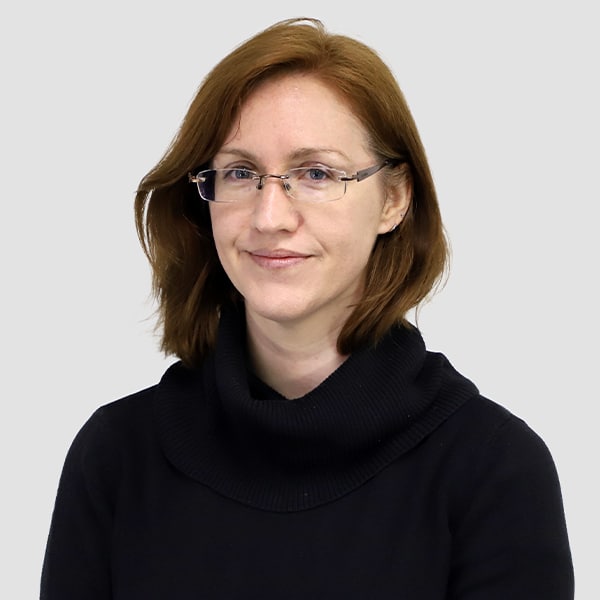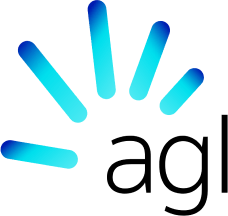Cooling and heating our homes is a big part of everyday life in Australia – and it’s one of the main contributors to household energy bills. The type of air conditioner you choose, how you use it and the climate you live in all play a part, so it’s worth knowing your options and how to use your system efficiently to keep costs down.
Air conditioning usage in Australia: 2025
The number of Australian households with air conditioning has grown dramatically over recent decades, from 330,000 units installed per year in 2010 to 1.5 million a year in 2022. Today, over 18 million units are in use across the country.
With this growth has come a rise in electricity use. Total annual electricity consumption for stationary air conditioning and heat pumps rose by 19% between 2016 and 2022 – though this is lower than the 26% growth in unit numbers, indicating that newer models are becoming more energy-efficient.
Even so, heating and cooling account for up to 50% of household energy use on average – and even more during peak times. In Adelaide, for example, AC use can account for 72% of electricity usage during these times and as much as 90% in Brisbane.
Types of air conditioners
Ducted reverse cycle air conditioning
A whole-home system that delivers cooled or heated air through ducts to every room.
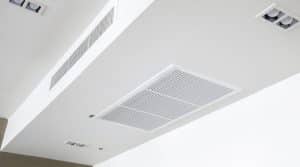
Pros
-
Whole-home comfort
Can cool or heat multiple rooms simultaneously, providing consistent comfort throughout the house.
-
Discreet design
Only vents are visible, keeping interiors neat and uncluttered.
Cons
-
High upfront and running costs
Installation and ductwork can be costly, and energy use is higher than smaller systems.
-
Professional installation required
Requires professional installation and ductwork design, which is time-consuming and expensive.
Ducted evaporative air conditioning
A system that draws in hot outside air and cools it through water-soaked pads before circulating it indoors.
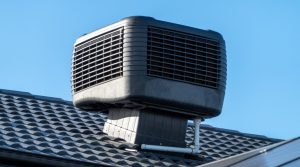
Pros
-
Energy-efficient
Uses less energy than traditional air conditioners, reducing electricity costs.
-
Environmentally friendly
Uses water to cool rather than refrigerants, making it eco-friendly.
Cons
-
Less effective in humidity
Cooling power drops when air moisture is high.
-
Requires ventilation
Windows need to be open to allow air circulation, which may not be ideal for security or allergy concerns.
Split system reverse cycle air conditioning
A ductless system with an indoor unit that cools or heats a single room via an outdoor compressor.
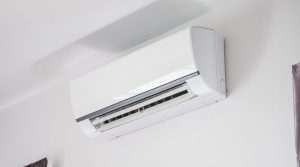
Pros
-
Easy installation
No ductwork makes installation simpler and less invasive.
-
Practical for smaller spaces
Ideal for heating or cooling one area without wasting energy on unused spaces.
Cons
-
Limited coverage
Designed for cooling individual rooms not entire homes.
-
Expensive to run
Multiple units are needed for full-home coverage, increasing cost and energy use.
Floor-mounted air conditioners
Units that stand on the floor rather than being wall mounted, connected to an outdoor compressor.

Pros
-
Flexible use
Can be installed in rooms with limited wall space or where wall mounting is challenging.
-
Easy maintenance
Units are accessible for regular filter cleaning and maintenance.
Cons
-
Takes up floor space
Occupies floor space, which could be an issue in smaller rooms.
-
Highly visible
Large and prominent in a room and cannot be concealed.
Window air conditioners
Compact systems fitted in a window or wall cavity to cool a single room.

Pros
-
Easy installation
Fits directly into the window frame without needing professional installation.
-
Portable between homes
Can be removed and reinstalled, making them a good option for renters.
Cons
-
Restricted views
Reduces natural light and visibility through the window.
-
Noise concerns
Known as ‘window rattlers' for their noticeable vibration and fan noise during use.
Portable air conditioners
Freestanding units that cool air and expel heat outside via an exhaust hose.

Pros
-
Easily moved
Can be moved from room to room to offer cooling where needed.
-
Quick to set up
Requires only a power outlet and window access for the exhaust hose.
Cons
-
Less efficient
Generally less energy-efficient than fixed systems, with higher running costs.
-
Ventilation required
The exhaust hose means they need to be positioned near a window.
Personal air coolers
Small, portable units that blow heat over a wet pad and release cool air.

Pros
-
Affordable
A budget-friendly option for cooling small areas, with minimal energy use.
-
Lightweight
Easy to move and operate anywhere without vents or installation.
Cons
-
Limited cooling range
Designed for individual use or small spaces and may not be effective in larger rooms.
-
Climate dependent
Works best in dry conditions and struggles in high humidity.
How much does air conditioning cost to run?
The cost of running an air conditioner depends on several factors:
Type of system
Portable units have lower upfront prices but are generally the most expensive to run due to their lower efficiency. Split systems, meanwhile, are more energy-efficient and cost-effective for ongoing use.
Thermostat settings
The higher (or lower) you push the temperature, the more energy you’ll use. Each degree of extra heating in winter or cooling in summer can increase energy consumption by about 5–10%. Aim for around 18–20 °C in winter and 25–27 °C in summer to balance comfort and efficiency.
Climate and location
Your local climate makes a big difference. Households in hotter regions like Queensland and the NT will generally spend more cooling costs, while those in cooler climates like Tasmania may spend more on winter heating.
Usage habits and home efficiency
Running times, the size of the area being cooled or heated, and how well your home is insulated all affect costs. A well-insulated home retains heat or cool air longer, meaning your system doesn’t have to work as hard.
Here’s an idea of how much your AC unit could cost to buy and run:
| System type | Typical price | Average yearly running cost (range) |
|---|---|---|
| Portable (2–5.5 kW) | $728 | $173 ($66–317) |
| Small split (up to 4 kW) | $1,438 | $82 ($50–134) |
| Medium split (4–6 kW) | $2,139 | $164 ($126–240) |
| Large split (over 6 kW) | $2,807 | $264 ($164–390) |
| Source: Choice | ||
You can use the FairAir Electricity Cost Estimator to get an idea of how much your air conditioner could cost you annually.
When considering the cost of air conditioning, it’s also worth factoring in how long your system will last. Air conditioners typically last between 8 and 20 years, depending on the system and how well it’s maintained. Portable units sit at the shorter end of that range, while ducted or split systems tend to last longer. Regular cleaning and servicing can help extend lifespan and maintain efficiency.
Running your aircon in summer vs winter
The time of year can have a big influence on your energy costs, and summer cooling can add more than $100 on average to your electricity bill.
Where you live also plays a part. In hotter regions like northern Queensland and the Northern Territory, households rely heavily on air conditioning in summer, leading to higher electricity bills during peak heat, but winter usage is minimal.
In milder climates such as Sydney or Melbourne, systems work harder year-round – cooling in summer and heating in winter – which can balance out electricity use across the seasons. In colder areas like Tasmania or southern Victoria, heating often dominates, making winter the most expensive time of year for energy use.
To help choose the most efficient system for your climate, the Zoned Energy Rating Label (ZERL) compares performance in hot, average and cold zones across Australia. You can use the Energy Rating Calculator to determine which climate zone your home is in.
Tips for saving money on your air conditioning
-
Ensure you’ve got a cheap electricity plan
Before focusing on how you use your air conditioner, ensure that you’ve compared your electricity plan. That’s going to play the biggest factor in your air conditioning cost.
-
Choose an energy-efficient model
Look at the ZERL to understand how efficiently a unit performs in the climate zone you’re in, helping you pick the best system for your home.
-
Adjust your thermostat
Avoid overheating in winter or overcooling in summer. Keeping your home at a moderate, comfortable temperature can reduce energy use and help lower your bills.
-
Only heat or cool the rooms you’re using
Close doors and use zone settings where possible to avoid wasting energy on unoccupied spaces.
-
Maintain your AC unit
Regularly clean or replace filters and schedule professional servicing to keep your system running efficiently and extend its lifespan.
-
Use fans to help circulate air
Ceiling or portable fans can help distribute warm or cool air more evenly, allowing you to rely less on your air conditioner and save on electricity.
Energy-saving tip
"Instead of using your air conditioner less, focus on making its work easier. If there are parts of the house you aren’t using, shut them off. Use your blinds to block out the sun – this alone can help manage the temperature by 2–6 degrees."

Make your air conditioner's job easier

Which air conditioner is best for me?
Choosing the right air conditioner depends on your space, lifestyle and climate, helping you find a system that is comfortable, efficient and suited to your needs.
For example, if you only need to heat or cool a single room, or use the system occasionally, a portable unit or small split system can be ideal, as they are easy to install and don’t waste energy on unused areas. These options also suit renters who are unable to install permanent units.
For larger homes or multiple rooms, ducted or multi-split systems provide even heating and cooling throughout, though they come with higher upfront costs. However, if you plan to stay in your home long-term, investing in a more efficient, longer-lasting system could save money and energy in the long run.
Climate is another key consideration: evaporative cooling works well in dry regions but is less effective in humid areas, while homes in hotter northern regions need strong cooling performance, and those in colder southern regions benefit from efficient heating.
